Simulation and Optimization of Film Thickness Uniformity in Physical Vapor Deposition
Abstract
:1. Introduction
2. Source Emission Characteristics and Thin Film Thickness Distribution
2.1. Emission Characteristics of Evaporation Source
2.1.1. Small Surface Source (Approximated Point Source)
2.1.2. Extended Source
2.2. Virtual Electron-Beam Evaporation Source
2.3. The Emission Characteristics of Sputter Sources
2.4. Thin Film Thickness Distribution
2.4.1. Thin Film Thickness Distribution of Evaporation Source
- The pressure at which the process is taking place is low enough to ensure that no collisions occur among the vapor and other particles, i.e., the mean-free paths are significantly larger than the dimensions of the deposition system.
- The intensity of the emission of vapor from the source can allow for collisions among the vapor molecules in an extended region in the vicinity of the source.
- Depending on the material undergoing evaporation, the sticking coefficient (Sc) of the vapor molecules can be ≤1 [39], where the sticking coefficient refers to the ratio of number of atoms stuck on the surface to the total number of atoms that impinge upon that surface during the same period of time.
2.4.2. Thin Film Thickness Distribution of Sputtering
- The incident ion is concentrated in the area near the surface of the target, which is accelerated by the electric field to increase the energy. The electric field on the surface of the conductor is always perpendicular to the surface of the conductor, so that the ion is aligned with the target’s surface normal. Therefore, it is assumed that ions bombard the target surface at its normal.
- Collision between the sputtered thin film atoms and the working gas/ions can be neglected.
- Once material is deposited on the substrate, there is no diffusion motion. They stop and become part of the film surface.
3. Calculation of Film Thickness of Substrate Holder on Various Configurations
3.1. Relative Film Thickness Calculation of Evaporation Source
3.1.1. Flat Plate Substrate Holder
3.1.2. Spherical Substrate Holder
3.1.3. Rotating Planar Substrate Holder
3.1.4. Rotating Spherical Substrate Holder
3.2. Relative Film Thickness Calculations of Sputtering Sources
3.2.1. Planar Substrate Holder with Rectangular Sputtering Target
3.2.2. Rotating Planar Substrate Holder and Circular Sputtering Target
4. Other Factors Affecting Film Thickness Uniformity and Relevant Improvement Methods
4.1. Effect of Tilt of Substrate or Evaporation Source
4.2. Effect of Vacuum Pressure
4.3. Effect of Substrate Temperature
5. Simulation of Film Thickness Distribution for Evaporation and Sputtering Deposition
5.1. Simulation of Evaporative Deposition
5.1.1. Rotating Spherical Substrate Holder
5.1.2. Planetary Substrate Holder
5.2. Simulation of Drum-Based Sputtering Deposition
6. Conclusions
Author Contributions
Funding
Conflicts of Interest
References
- Van Popta, A.C.; Hawkeye, M.M.; Sit, J.C.; Brett, M.J. Gradient-index narrow-bandpass filter fabricated with glancing-angle deposition. Opt. Lett. 2004, 29, 2545–2547. [Google Scholar] [CrossRef] [PubMed]
- Chu, H.O.; Song, S.; Li, C.; Gibson, D. Surface enhanced raman scattering substrates made by oblique angle deposition: methods and applications. Coatings 2017, 7, 26. [Google Scholar] [CrossRef]
- Darband, G.B.; Aliofkhazraei, M.; Khorsand, S.; Sokhanvar, S.; Kaboli, A. Science and engineering of superhydrophobic surfaces: Review of corrosion resistance, chemical and mechanical stability. Arabian J. Chem. 2018, in press. [Google Scholar] [CrossRef]
- Mattox, D.M. Handbook of Physical Vapor Deposition (PVD) Processing, 2nd ed.; William Andrew: Boston, NY, USA, 2010. [Google Scholar]
- Hill, R.J. Physical Vapor Deposition, 2nd ed.; Temescal a Division of the BOC Group: Berkeley, CA, USA, 1986. [Google Scholar]
- Mahan, J.E. Physical Vapor Deposition of Thin Films, 1st ed.; Wiley-VCH: New York, NY, USA, 2000; p. 336. [Google Scholar]
- Savale, P.A. Physical vapor deposition (PVD) methods for synthesis of thin films: A comparative study. Arch. Appl. Sci. Res. 2016, 8, 1–8. [Google Scholar]
- Kaufman, H.R.; Cuomo, J.J.; Harper, J.M.E. Technology and applications of broad-beam ion sources used in sputtering. Part I. Ion source technology. J. Vac. Sci. Technol. 1982, 21, 725–736. [Google Scholar] [CrossRef]
- Li, P.H.; Chu, P.K. Thin film deposition technologies and processing of biomaterials. In Thin Film Coatings for Biomaterials and Biomedical Applications; Hans, J.G., Ed.; Elsevier: Amsterdam, The Netherlands, 2016; pp. 3–28. [Google Scholar]
- Pinard, L.; Michel, C.; Sassolas, B.; Balzarini, L.; Degallaix, J.; Dolique, V.; Flaminio, R.; Forest, D.; Granata, M.; Lagrange, B.; et al. Mirrors used in the LIGO interferometers for first detection of gravitational waves. Appl. Opt. 2017, 56, C11–C15. [Google Scholar] [CrossRef] [PubMed]
- Raut, H.K.; Ganesh, V.A.; Nair, A.S.; Ramakrishna, S. Anti-reflective coatings: A critical, in-depth review. Energy Environ. Sci. 2011, 4, 3779–3804. [Google Scholar] [CrossRef]
- Madsen, C.K.; Zhao, J.H. Optical Filter Design and Analysis: A Signal Processing Approach, 1st ed.; John wiley & Sons: New York, NY, USA, 1999; pp. 95–154. [Google Scholar]
- Lenner, M.; Fiedler, A.; Spielmann, C. Reliability of laser safety eye wear in the femtosecond regime. Opt. Express 2004, 12, 1329–1334. [Google Scholar] [CrossRef] [PubMed]
- Fancey, K.S. A coating thickness uniformity model for physical vapor-deposition systems: Overview. Surf. Coat. Technol. 1995, 71, 16–29. [Google Scholar] [CrossRef]
- Swann, S.; Collett, S.A.; Scarlett, I.R. Film thickness distribution control with off-axis circular magnetron sources onto rotating substrate holders: Comparison of computer simulation with practical results. J. Vac. Sci. Technol. A 1990, 8, 1299–1303. [Google Scholar] [CrossRef]
- Persad, A.H.; Ward, C.A. Expressions for the evaporation and condensation coefficients in the hertz-knudsen relation. Chem. Rev. 2016, 116, 7727–7767. [Google Scholar] [CrossRef] [PubMed]
- Oliver, J.B.; Talbot, D. Optimization of deposition uniformity for large-aperture National Ignition Facility substrates in a planetary rotation system. Appl. Opt. 2006, 45, 3097–3105. [Google Scholar] [CrossRef] [PubMed]
- Ramprasad, B.S.; Radha, T.S. Uniformity of film thickness on rotating planetary planar substrates. Thin Solid Films 1973, 15, 55–64. [Google Scholar] [CrossRef]
- Usoskin, A.I. Correcting diaphragms for improving the thickness uniformity of vacuum coatings. Sov. J. Opt. Technol. 1984, 51, 471–474. [Google Scholar]
- Guo, C.; Kong, M.; Liu, C.; Li, B. Optimization of thickness uniformity of optical coatings on a conical substrate in a planetary rotation system. Appl. Opt. 2013, 52, B26–B32. [Google Scholar] [CrossRef] [PubMed]
- Kotlikov, E.N.; Prokashev, V.N.; Ivanov, V.A.; Tropin, A.N. Thickness uniformity of films deposited on rotating substrates. J. Opt. Technol. 2009, 76, 100–103. [Google Scholar] [CrossRef]
- Li, C.; Song, S.; Gibson, D.; Child, D.; Waddell, E. Modeling and validation of uniform large-area optical coating deposition on a rotating drum using microwave plasma reactive sputtering. Appl. Opt. 2017, 56, C65–C70. [Google Scholar] [CrossRef] [PubMed]
- Swann, S. Film thickness distribution in magnetron sputtering. Vacuum 1988, 38, 791–794. [Google Scholar] [CrossRef]
- Strijckmans, K.; Depla, D. A time-dependent model for reactive sputter deposition. J. Phys. D Appl. Phys. 2014, 47, 235302. [Google Scholar] [CrossRef]
- Villa, F.; Martínez, A.; Regalado, L.E. Correction masks for thickness uniformity in large-area thin films. Appl. Opt. 2000, 39, 1602–1610. [Google Scholar] [CrossRef] [PubMed]
- Hsu, J.C. Analysis of the thickness uniformity improved by using wire masks for coating optical bandpass filters. Appl. Opt. 2014, 53, 1474–1480. [Google Scholar] [CrossRef] [PubMed]
- Holland, L. Vacuum Deposition of Thin Films, 1st ed.; Chapman & Hall: London, UK, 1970. [Google Scholar]
- Sree Harsha, K.S. Chapter 5: Thermal evaporation source. In Principles of Vapor Deposition of Thin Films, 1st ed.; Elsevier: San Diego, CA, USA, 2005; pp. 367–452. [Google Scholar]
- Depisch, G. Schichtdickengleichmäßigkeit von aufgedampften schichten in theorie und praxis. Vak. Tech. 1981, 3, 67–77. (In German) [Google Scholar]
- Ohring, M. Materials Science of Thin Films: Deposition and Structure, 2nd ed.; Elsevier: San Diego, CA, USA, 2002; pp. 123–125. [Google Scholar]
- Pulker, H.K. Film thickness. In Coatings on Glass, 1st ed.; Elsevier: Amsterdam, The Netherlands, 1999; pp. 318–342. [Google Scholar]
- Balakrishnan, J.; Boyd, I.D.; Braun, D.G. Monte Carlo simulation of vapor transport in physical vapor deposition of titanium. J. Vac. Sci. Technol. A 2000, 18, 907–916. [Google Scholar] [CrossRef]
- Musset, A.; Stevenson, I.C. Thickness distribution of evaporated films. Proc. SPIE 1990, 1270, 287–292. [Google Scholar]
- Sigmund, P. Fundamental Processes in Sputtering of Atoms and Molecules (SPUT92); Kongelige Danske videnskabernes selskab: Copenhagen, Denmark, 1993; p. 675. [Google Scholar]
- Kern, W.; Schuegraf, K.K. Deposition technologies and applications: Introduction and overview. In Handbook of Thin Film Deposition Processes and Techniques, 2nd ed.; Seshan, K., Ed.; Noyes Publications/William Andrew Publishing: Norwich, NY, USA, 2001; pp. 11–43. [Google Scholar]
- Goeckner, M.J.; Goree, J.A.; Sheridan, T.E. Monte Carlo simulation of ions in a magnetron plasma. IEEE Trans. Plasma Sci. 1991, 19, 301–308. [Google Scholar] [CrossRef]
- Bae, K.Y.; Yang, Y.S.; Choi, B.H. Analysis of magnetic field distribution in a cylindrical-type magnetron sputtering system. Proc. Inst. Mech. Eng. B J. Eng. Mach. 2013, 227, 881–889. [Google Scholar] [CrossRef]
- Martynenko, Y.V.; Rogov, A.V.; Shul’ga, V.I. Angular distribution of atoms during the magnetron sputtering of polycrystalline targets. Tech. Phys. 2012, 57, 439–444. [Google Scholar] [CrossRef]
- Villa, F.; Pompa, O. Emission pattern of real vapor sources in high vacuum: An overview. Appl. Opt. 1999, 38, 695–703. [Google Scholar] [CrossRef] [PubMed]
- Huang, Y.X.; Wen, W.Y.; Sun, J.W.; Huai, C.F.; Zeng, H.F.; Zhong, F.H. Thickness uniformity control of sputtered film based on roll-to-roll system with a rectangular target. J. South China Univ. Technol. Sci. 2015, 43, 81–86. (In Chinese) [Google Scholar]
- Fan, Z. Thickness distribution of thin film deposited with magnetro-sputtering. J. Appl. Sci. 1993, 2, 007. [Google Scholar]
- Hu, Z.; Li, Z.; Miao, X.; Liu, W. On the thickness uniformity of films deposited by magnetron sputtering. J. Huazhong Univ. Sci. Technol. 1996, 1, 89–92. (In Chinese) [Google Scholar] [CrossRef]
- Holland, L.; Steckelmacher, W.; Yarwood, J. Vacuum Manual, 1st ed.; Spon: London, UK, 1974; pp. 576–599. [Google Scholar]
- Macleod, H.A. Thin-Film Optical Filters; CRC Press/Taylor & Francis: New York, NY, USA, 2010; pp. 488–509. [Google Scholar]
- Tang, J.F.; Gu, P.F.; Liu, X.; Li, H.F. Modern Optical Thin Film Technology, 2nd ed.; Zhejiang University Press: Hangzhou, China, 2006; pp. 24–31. (In Chinese) [Google Scholar]
- Gu, P.F. Theoretical calculation of thickness uniformity of optical thin films. Laser Infrared 1985, 1, 47–50. (In Chinese) [Google Scholar]
- Willke, B.; Aufmuth, P.; Aulbert, C.; Babak, S. The GEO 600 gravitational wave detector. Classical Quantum Gravity 2002, 19, 1377. [Google Scholar] [CrossRef]
- Yang, B. Study On the Distribution of Magnetic Filed and Thin Film Thickness Uniformity of Magnetron Sputterings System. Master’s Thesis, Xi’an University of Technology, Xi’an, China, 2009. (In Chinese). [Google Scholar]
- Ma, H.C. Uniformity Analysis of Substrate Film Thickness of Magnetron Sputtering Machine. Master’s Thesis, Northeastern University, Shenyang, China, 2010. (In Chinese). [Google Scholar]
- Oliver, J.B. Analysis of a planetary-rotation system for evaporated optical coatings. Appl. Opt. 2016, 55, 8550–8555. [Google Scholar] [CrossRef] [PubMed]
- Dong, H.K.; Zhao, J.H.; Lin, R.L.; Hu, N.X.; Chen, C.G. Study and analysis on the film uniformity. Piezoelectr. Acoustoopt. 2006, 28, 578–580. [Google Scholar]
- Tian, M.B.; Liu, D.L. Chapter 3: Optical properties of thin films. In Handbook of Thin Film Science and Technology, 1st ed.; Mechanical Industry Press: Beijing, China, 1991; pp. 131–156. (In Chinese) [Google Scholar]
- Arkwright, J.; Underhill, I.; Pereira, N.; Gross, M. Deterministic control of thin film thickness in physical vapor deposition systems using a multi-aperture mask. Opt. Express 2005, 13, 2731–2741. [Google Scholar] [CrossRef] [PubMed]
- Liu, C.; Kong, M.; Guo, C.; Gao, W.; Li, B. Theoretical design of shadowing masks for uniform coatings on spherical substrates in planetary rotation systems. Opt. Express 2012, 20, 23790–23797. [Google Scholar] [CrossRef] [PubMed]
- Abzalova, G.I.; Sabirov, R.S.; Mikhailov, A.V. Depositing uniform-thickness coatings on large surfaces by means of electron-beam evaporation in vacuum. J. Opt. Technol. 2005, 72, 799–801. [Google Scholar] [CrossRef]
- Grezes-Besset, C.; Richier, R.; Pelletier, E. Layer uniformity obtained by vacuum evaporation: Application to Fabry-Perot filters. Appl. Opt. 1989, 28, 2960–2964. [Google Scholar] [CrossRef] [PubMed]
- Gottmann, J.; Kreutz, E.W. Pulsed laser deposition of alumina and zirconia thin films on polymers and glass as optical and protective coatings. Surf. Coat. Technol. 1999, 116, 1189–1194. [Google Scholar] [CrossRef]
- Ko, C.H.; Chang, K.Y.; Huang, Y.M. Analytical modeling and tolerance analysis of a linear variable filter for spectral order sorting. Opt. Express 2015, 23, 5102–5116. [Google Scholar] [CrossRef] [PubMed]

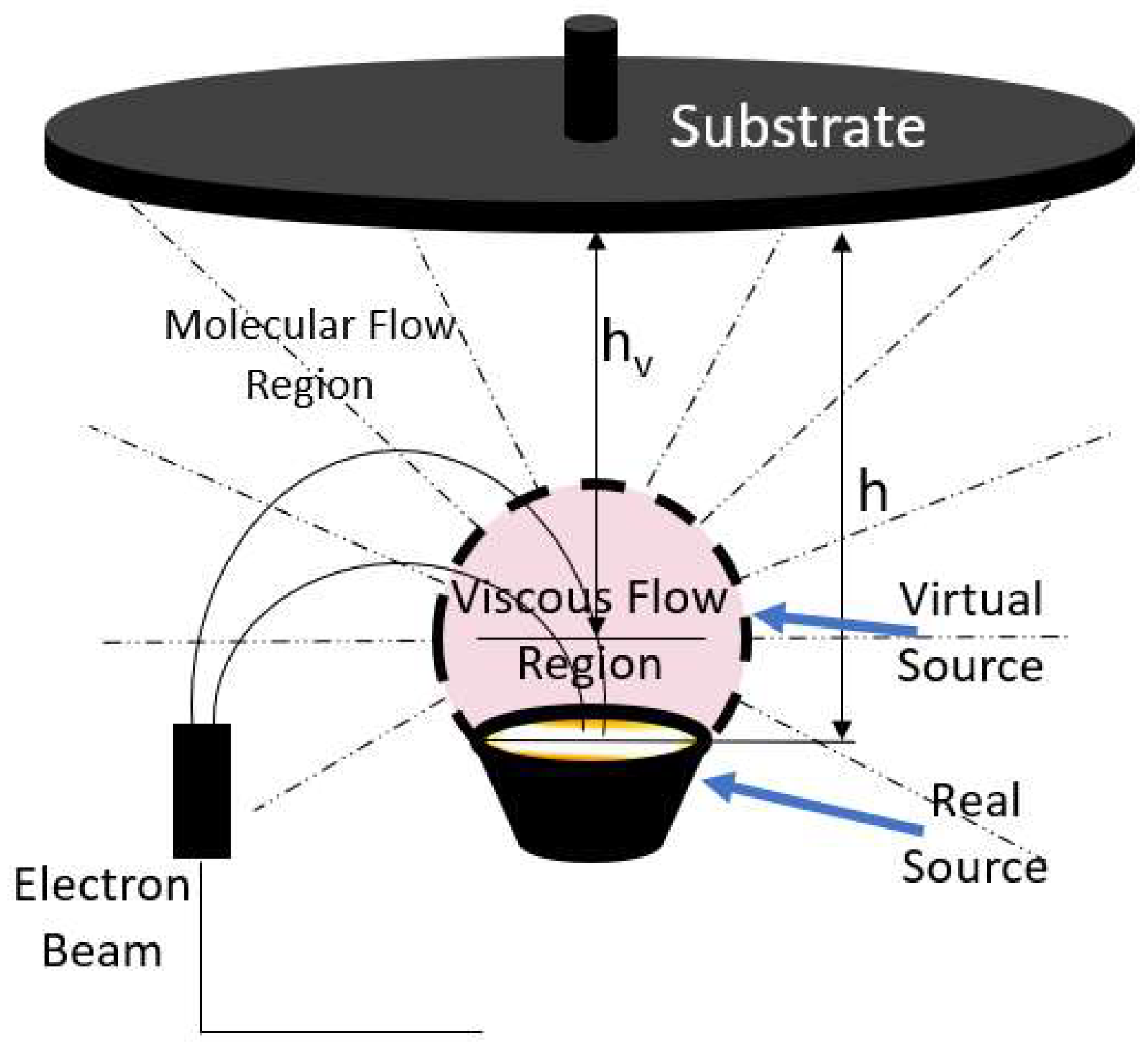
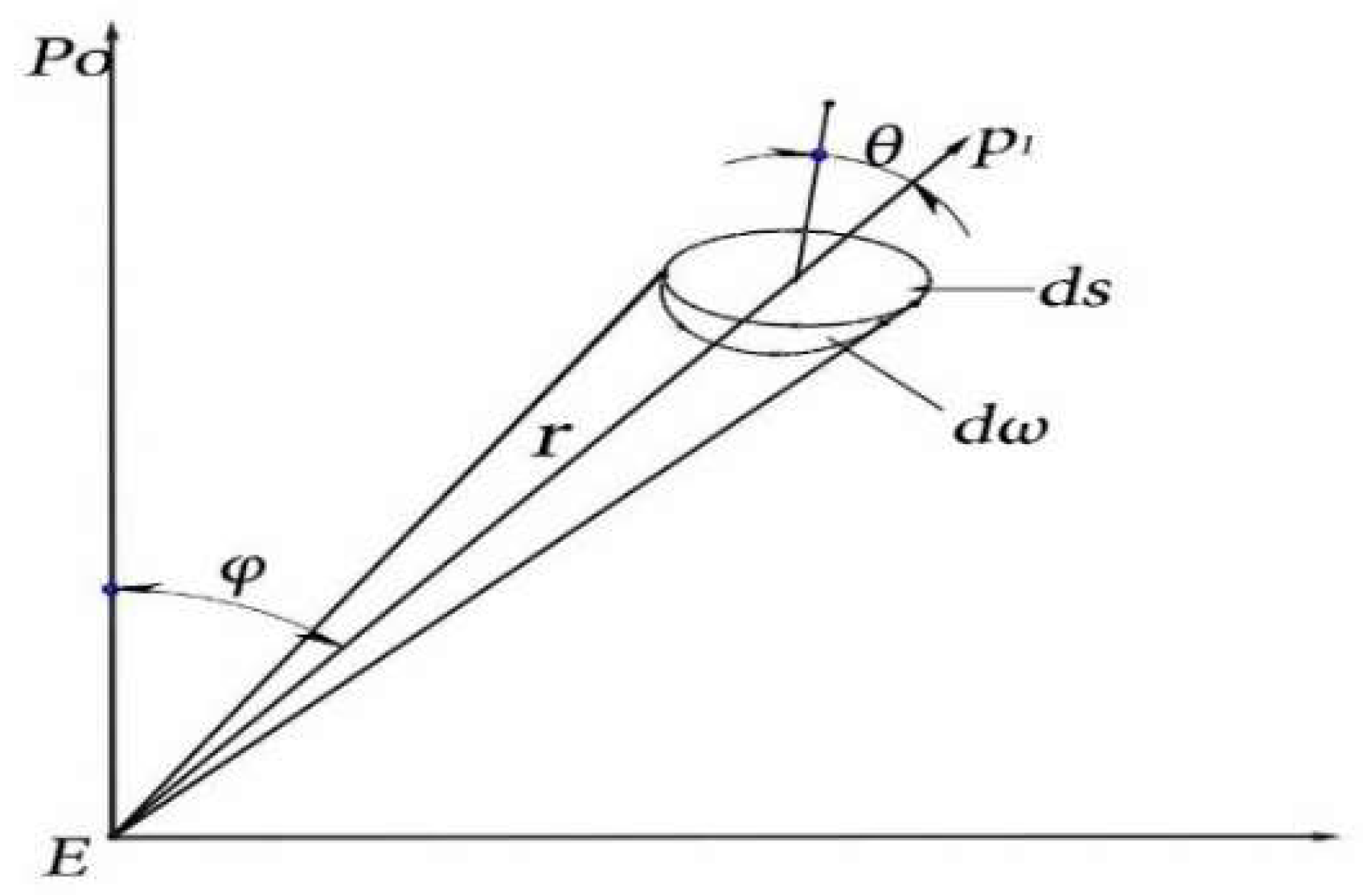


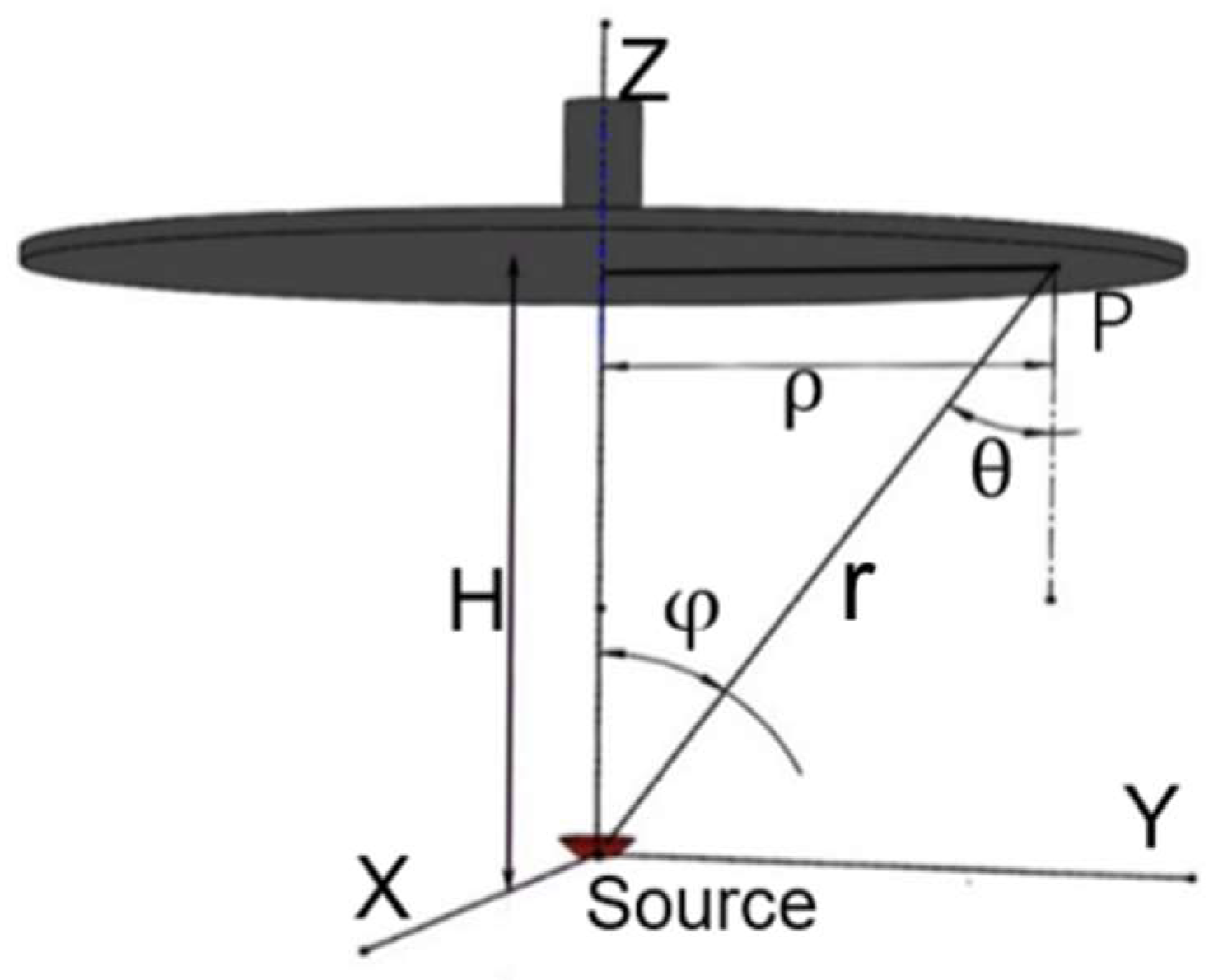
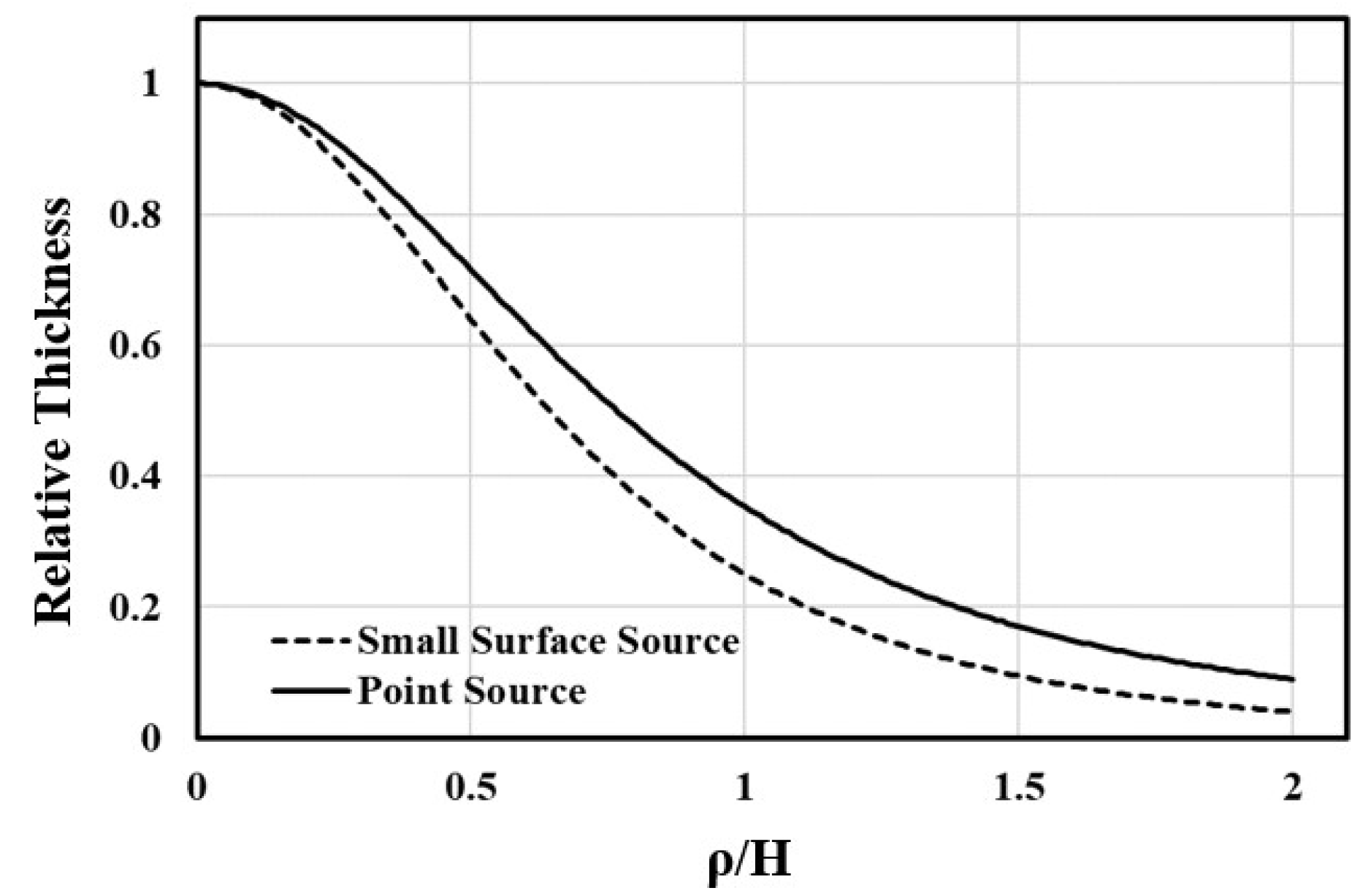

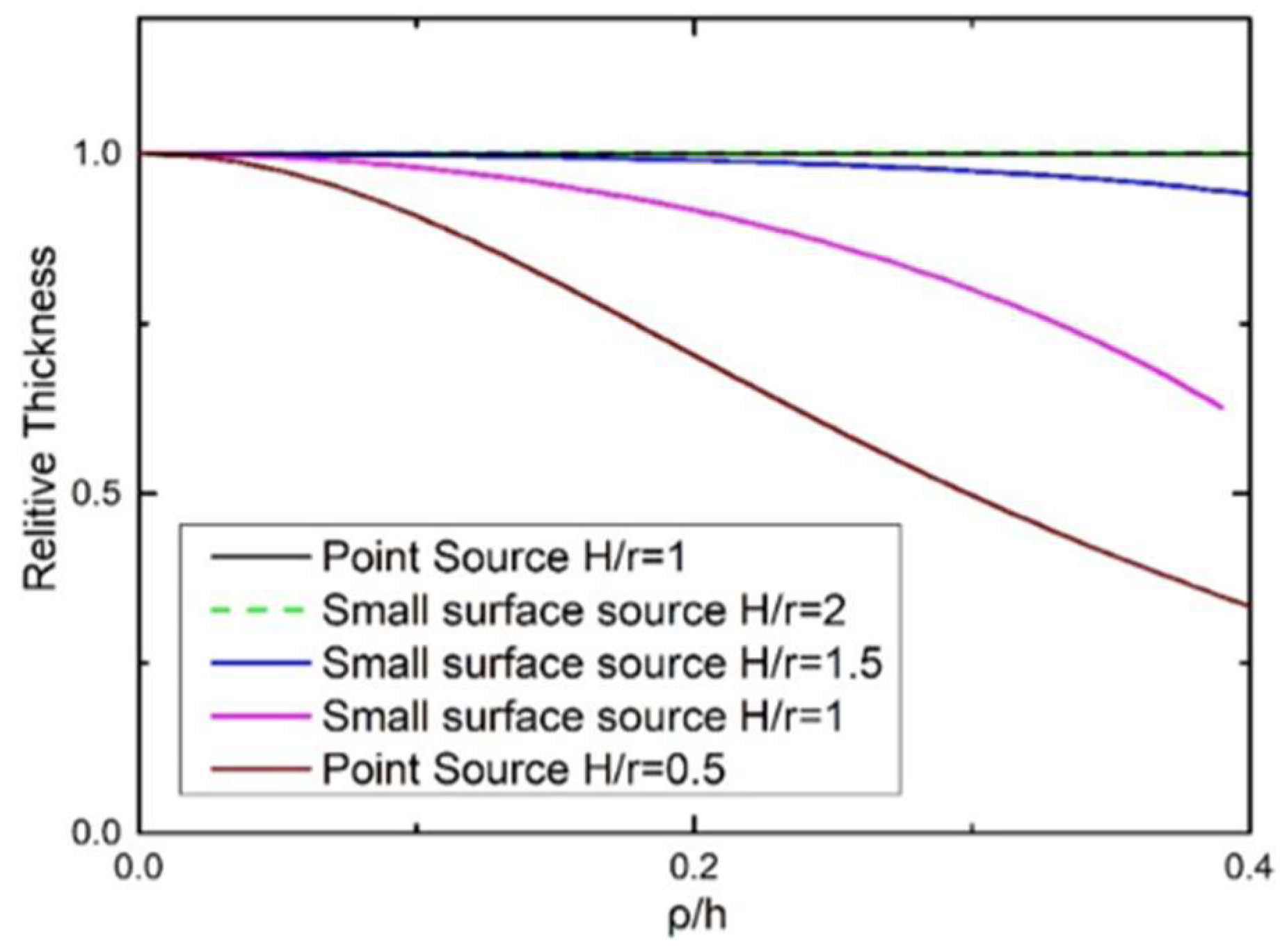
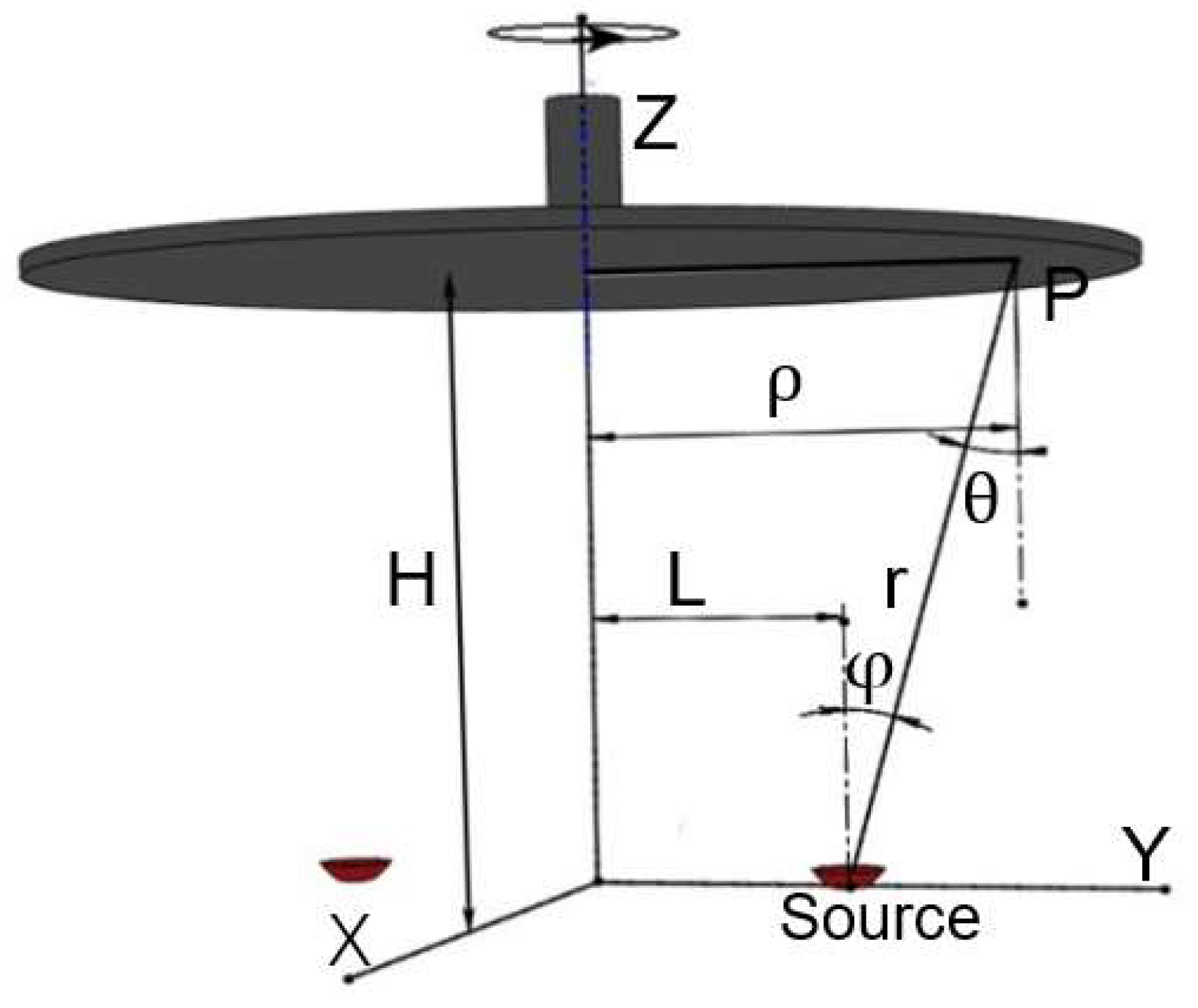
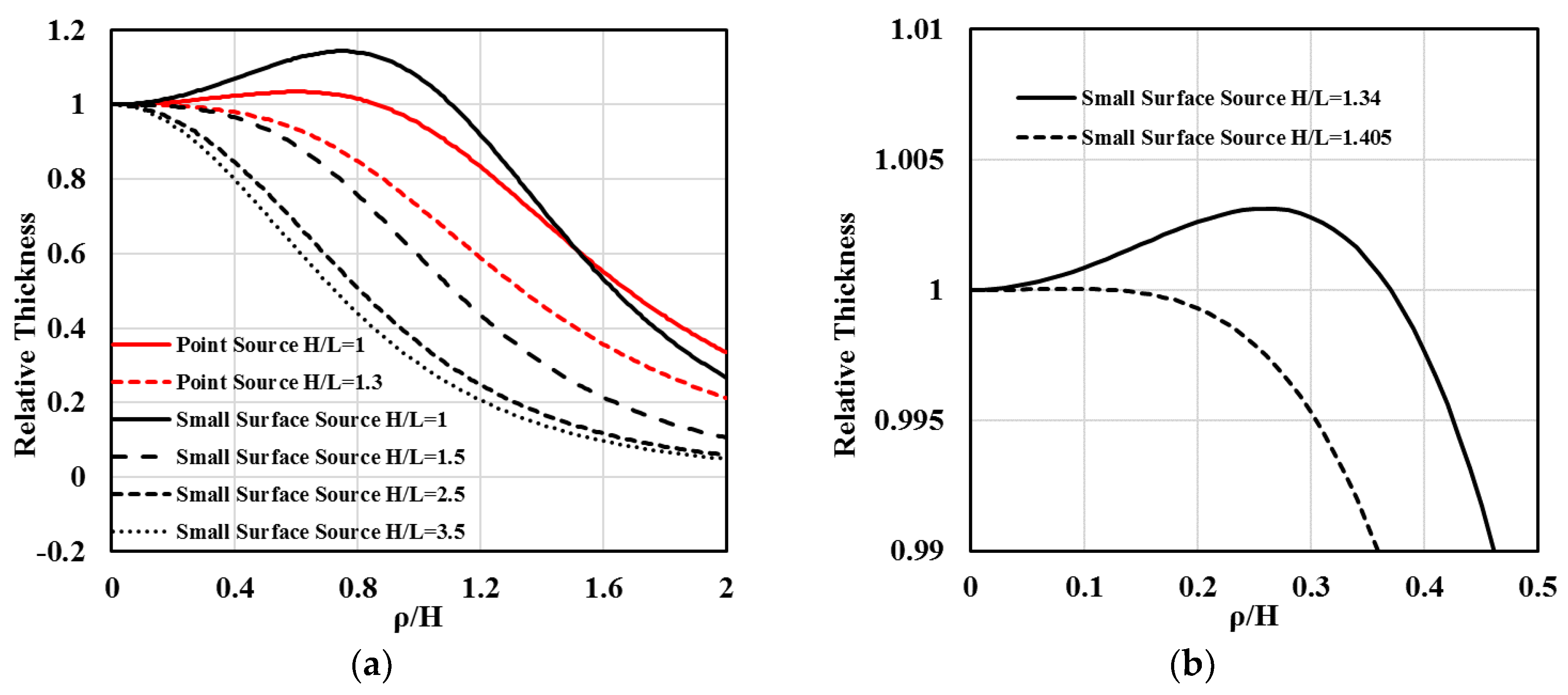
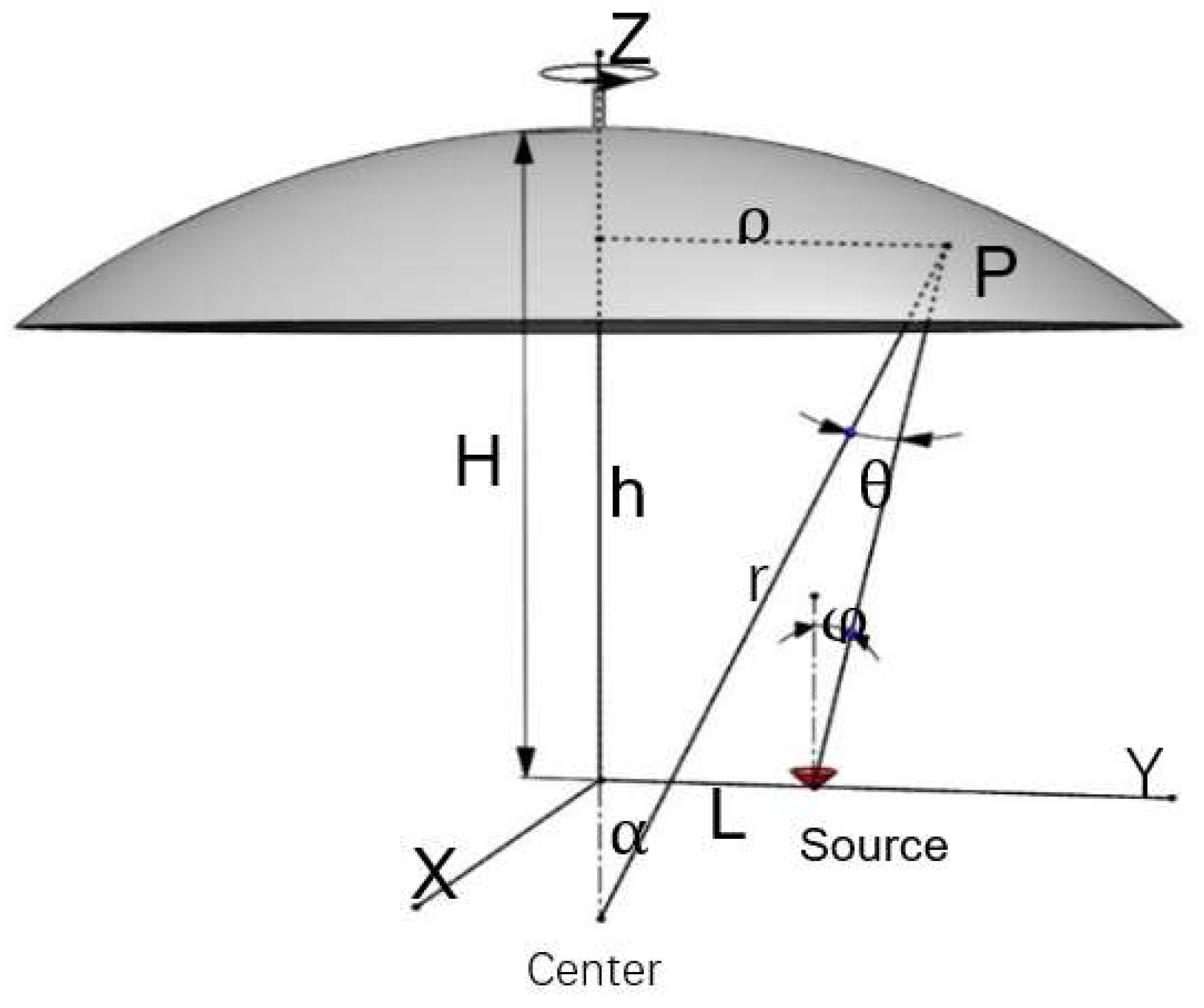
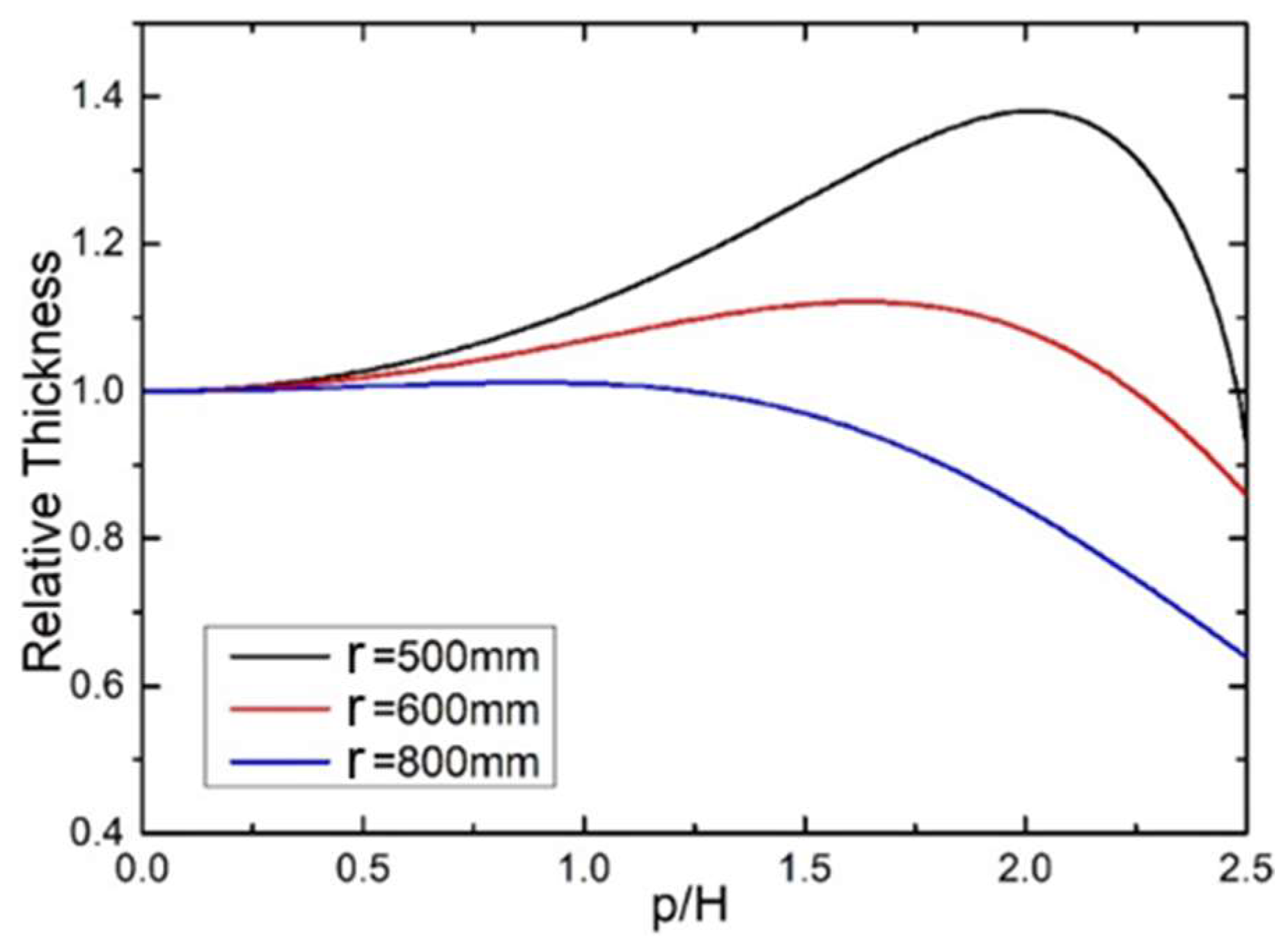
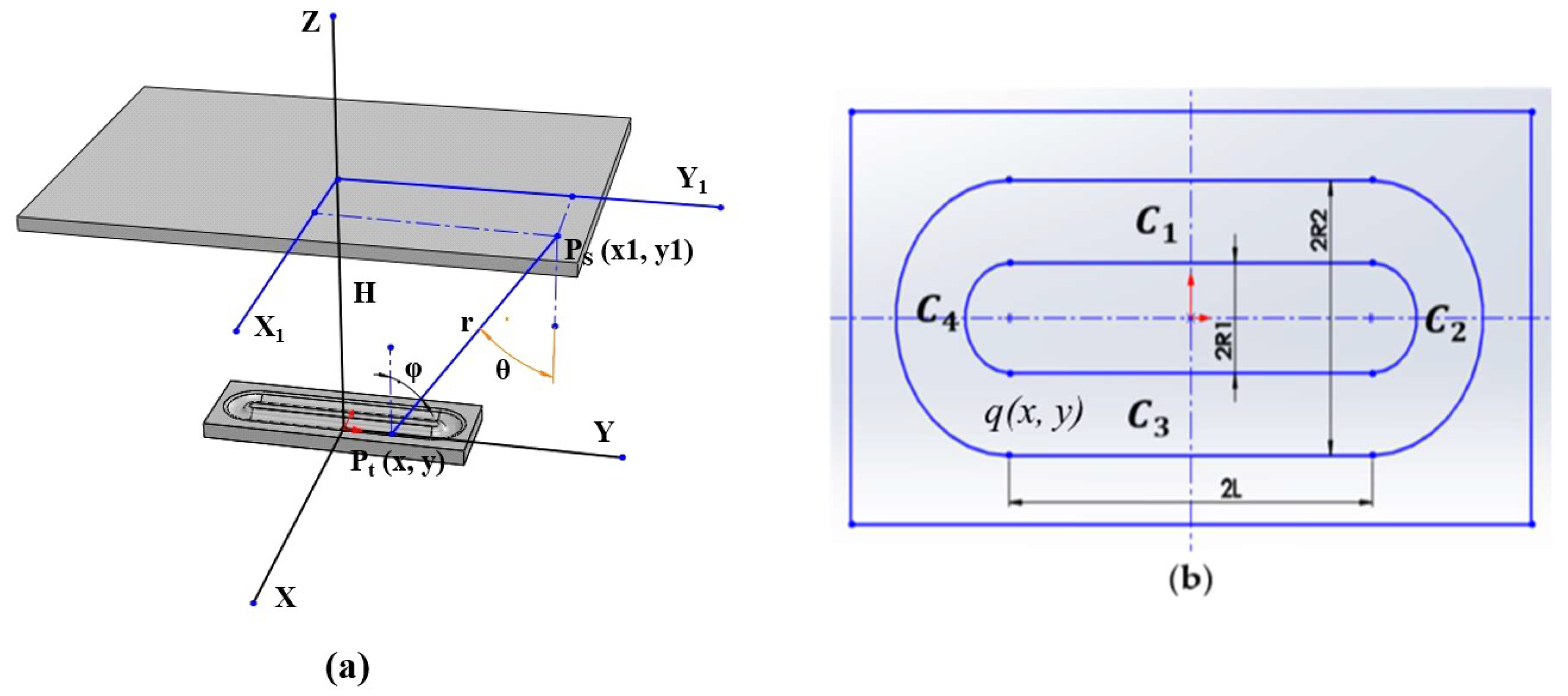
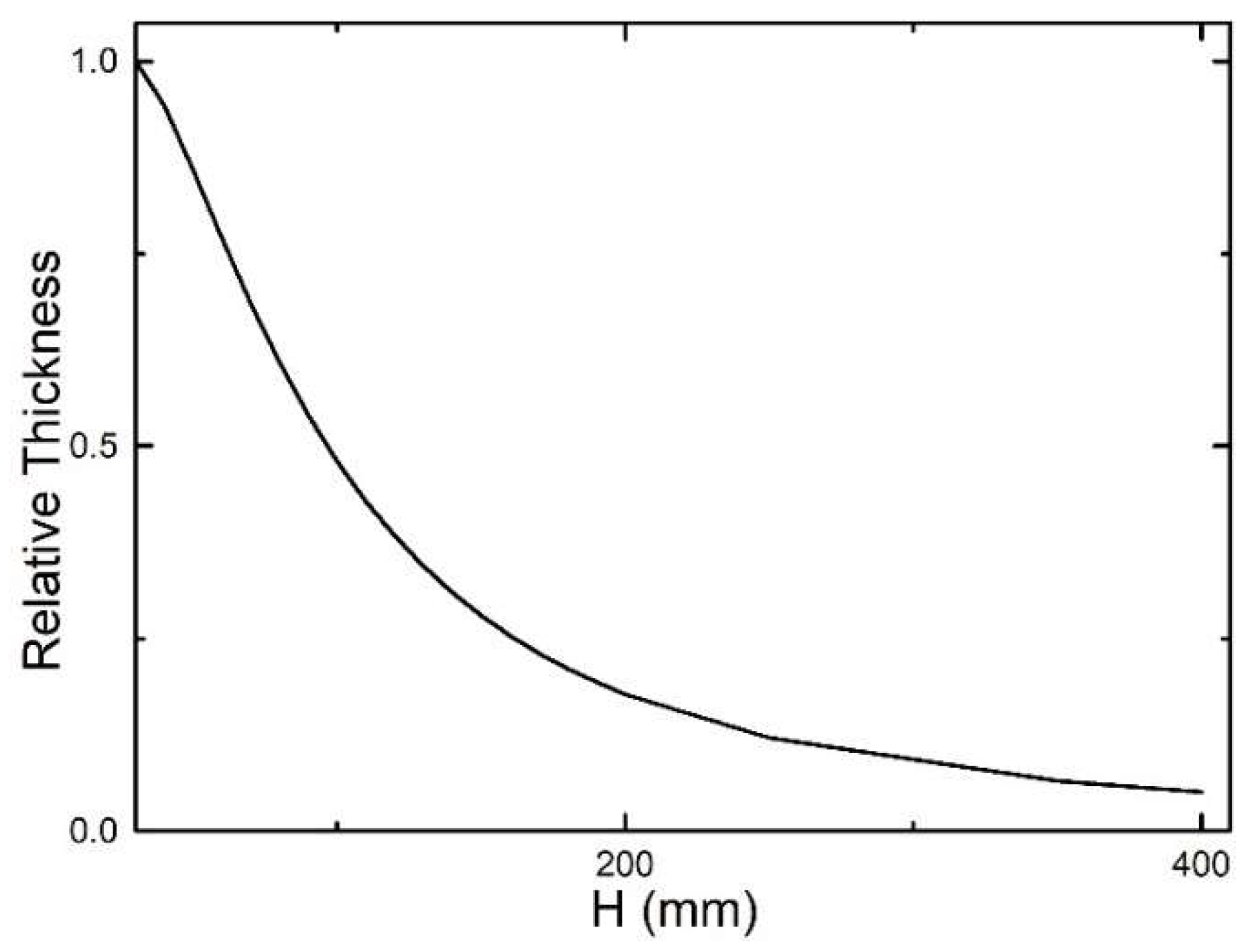
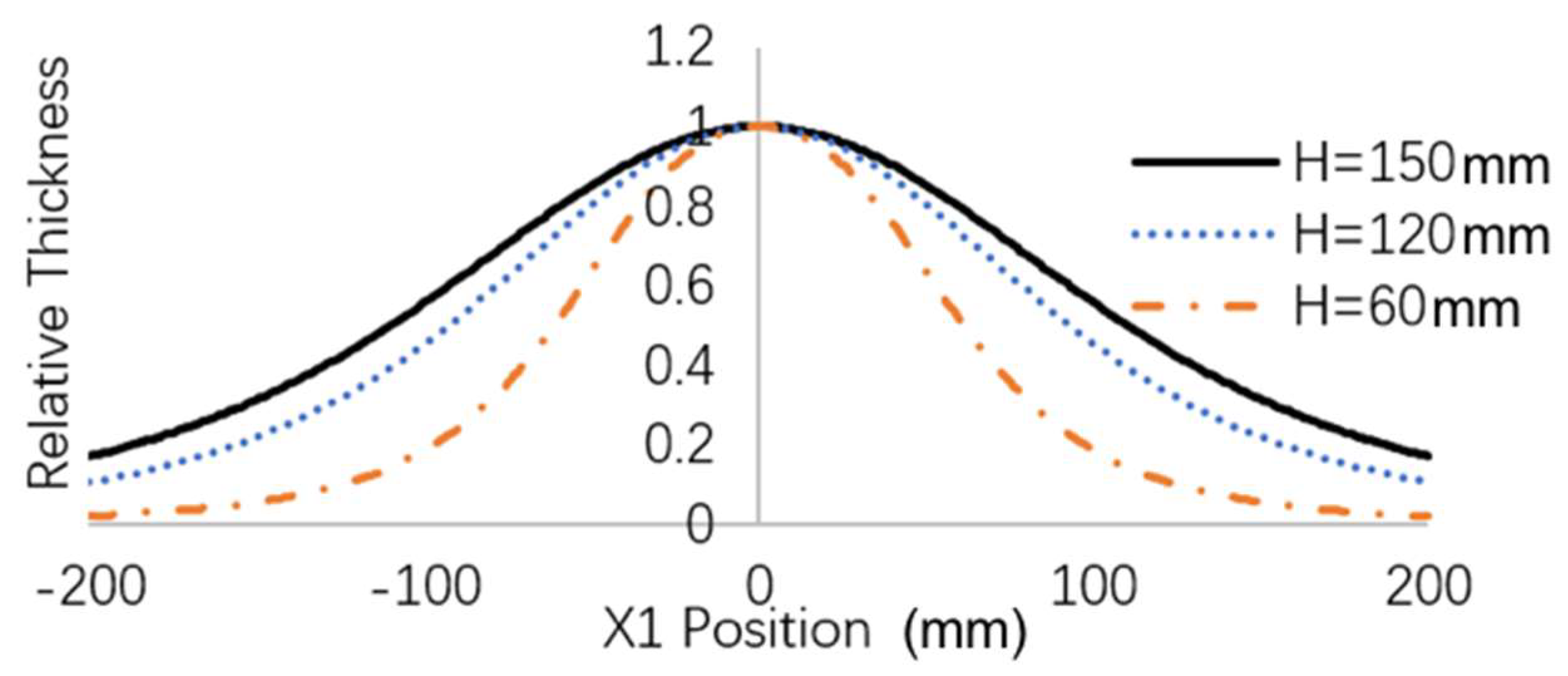
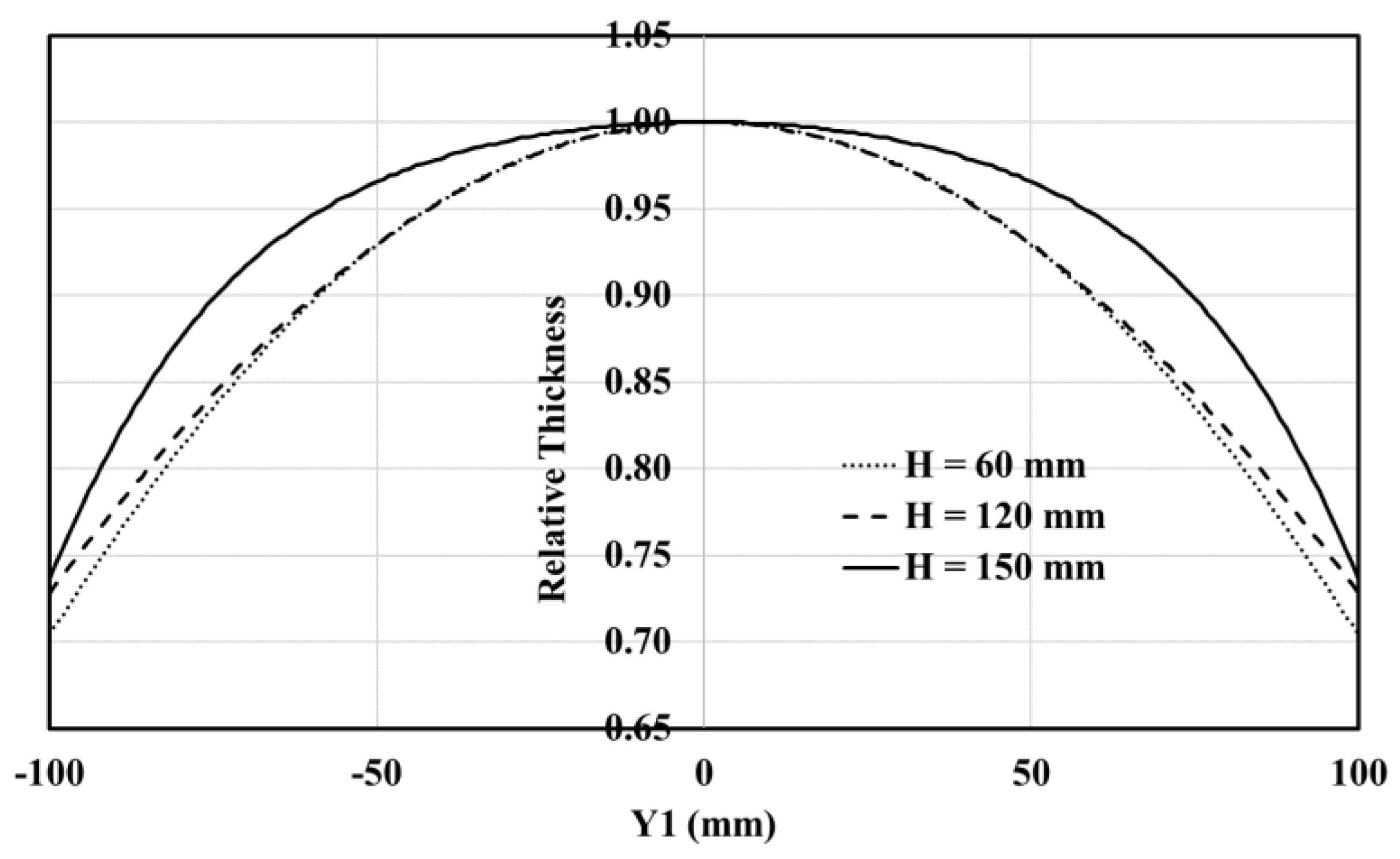
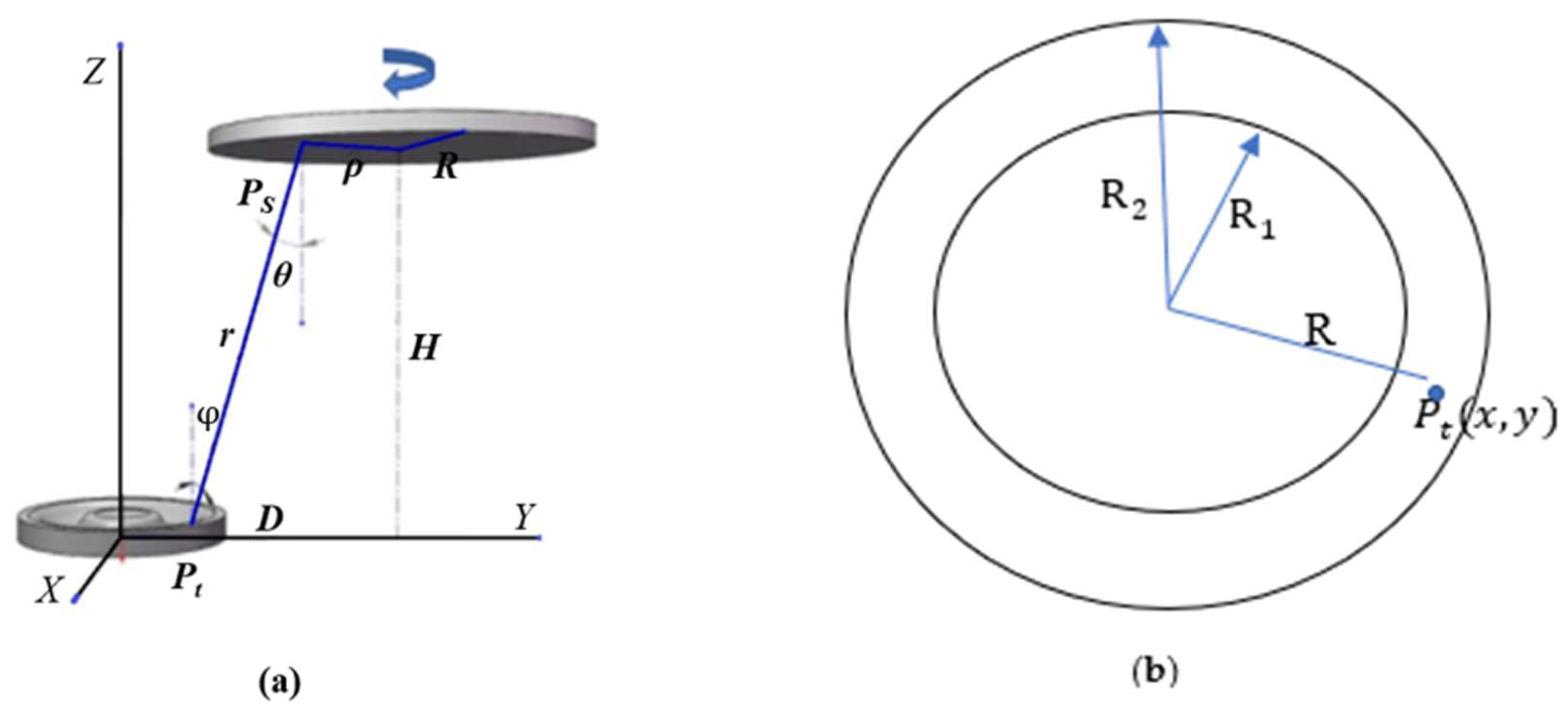
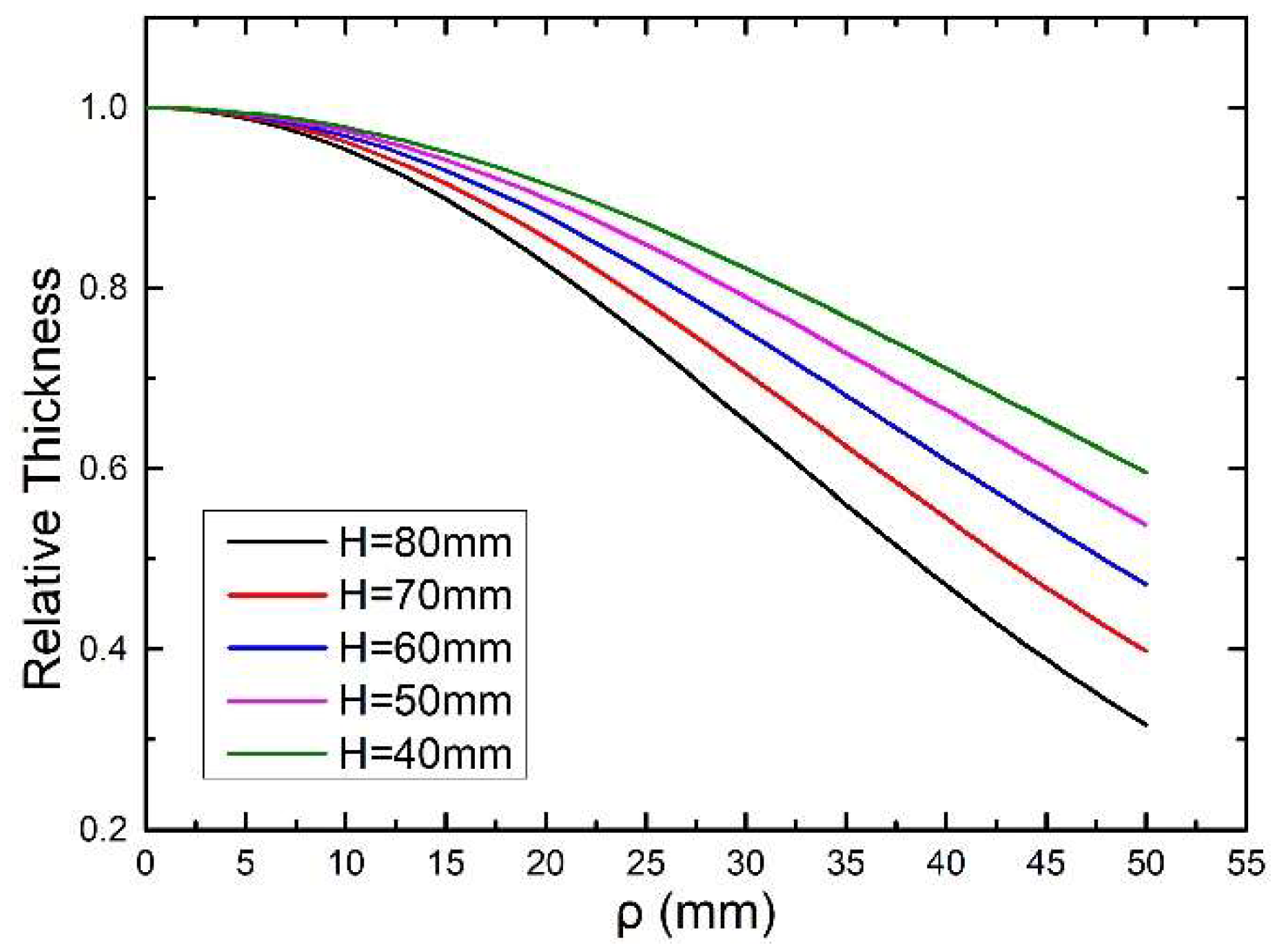
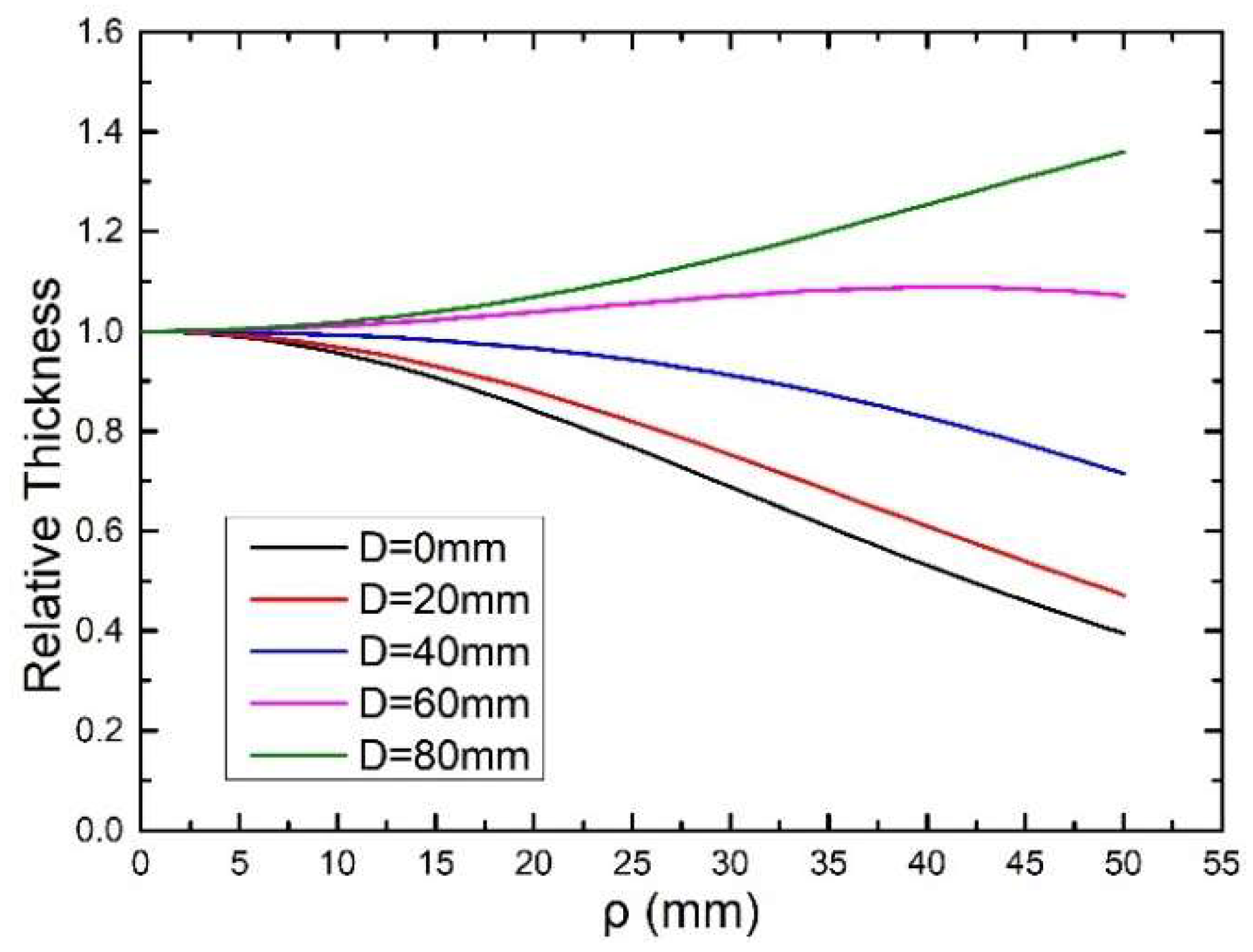
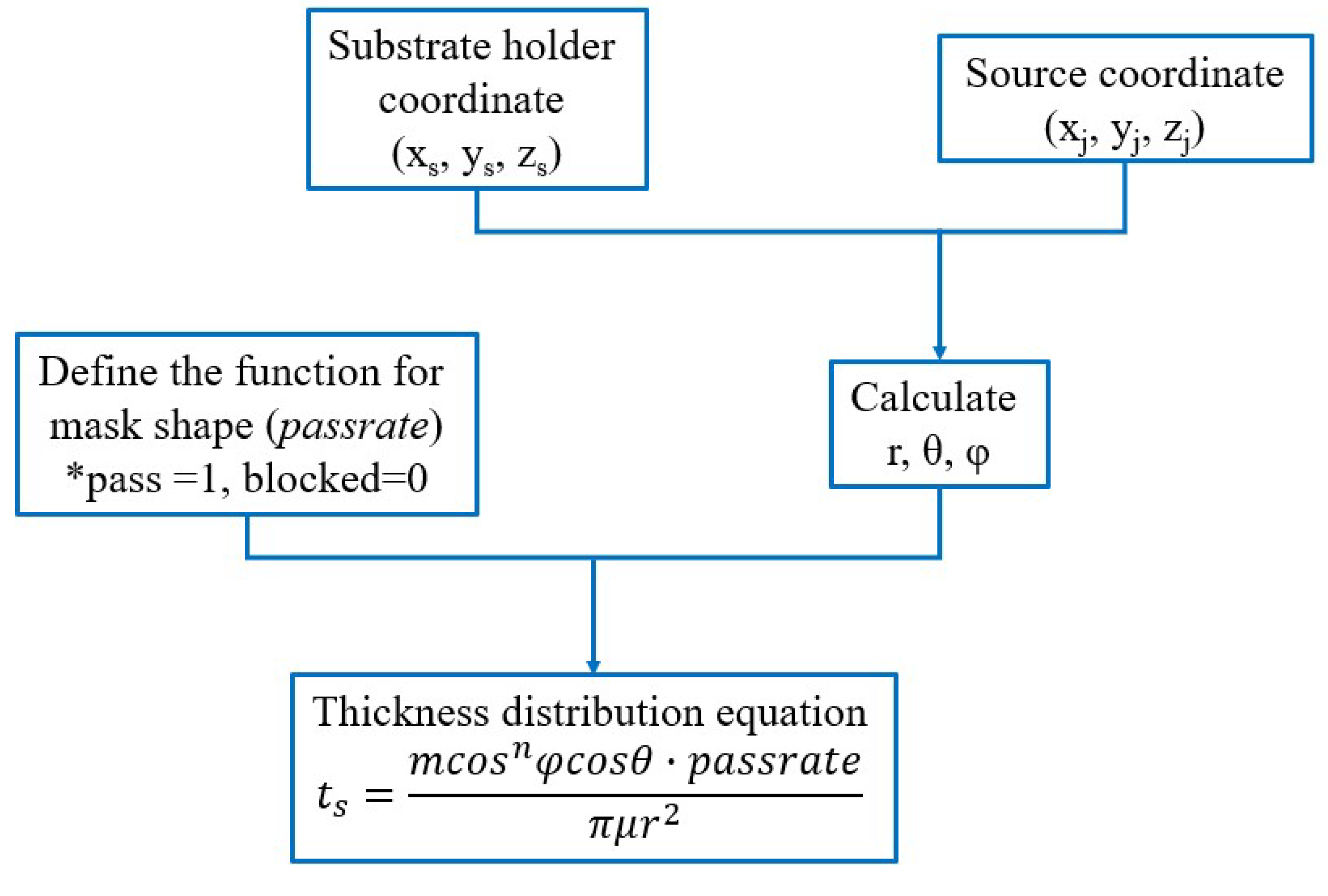
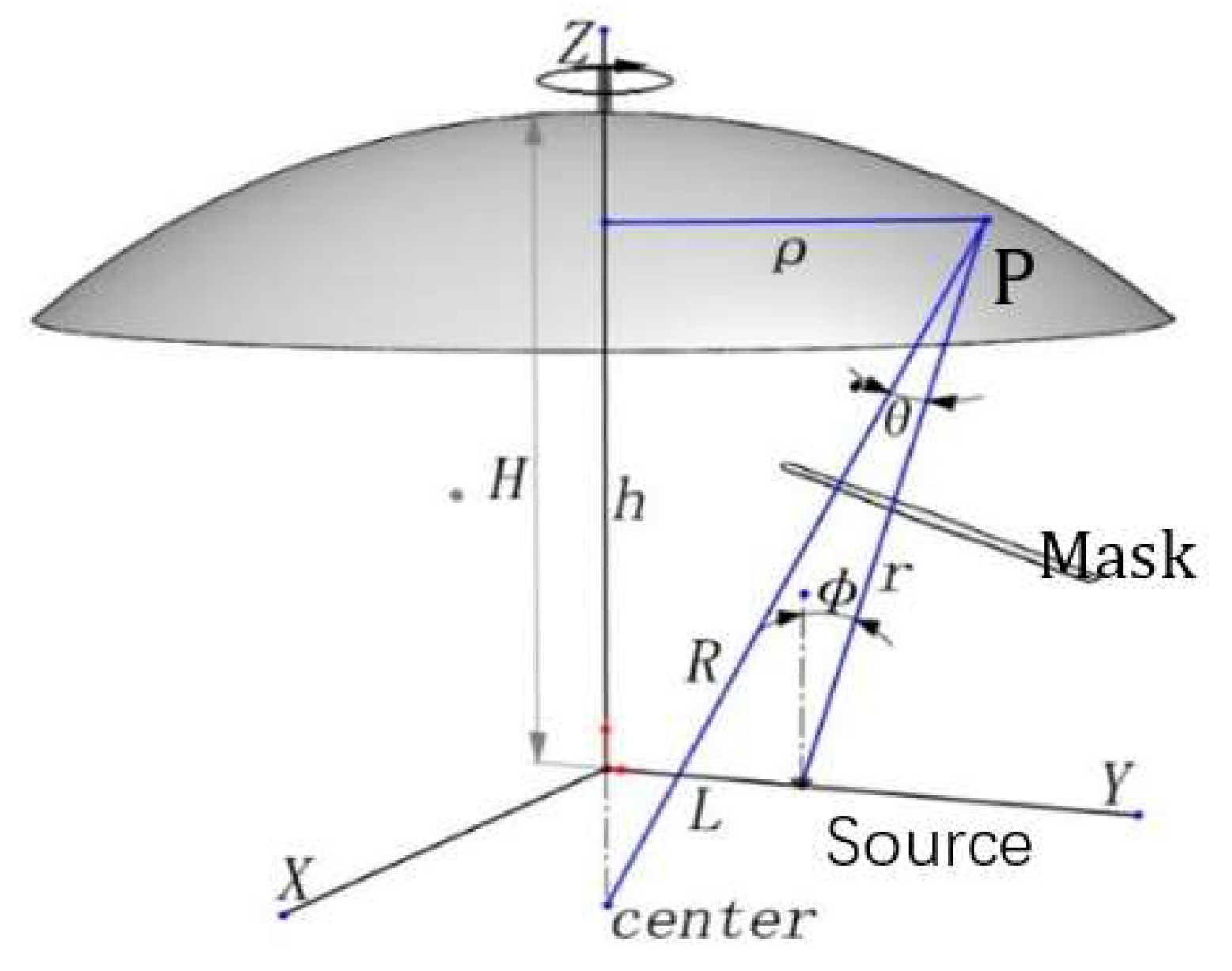
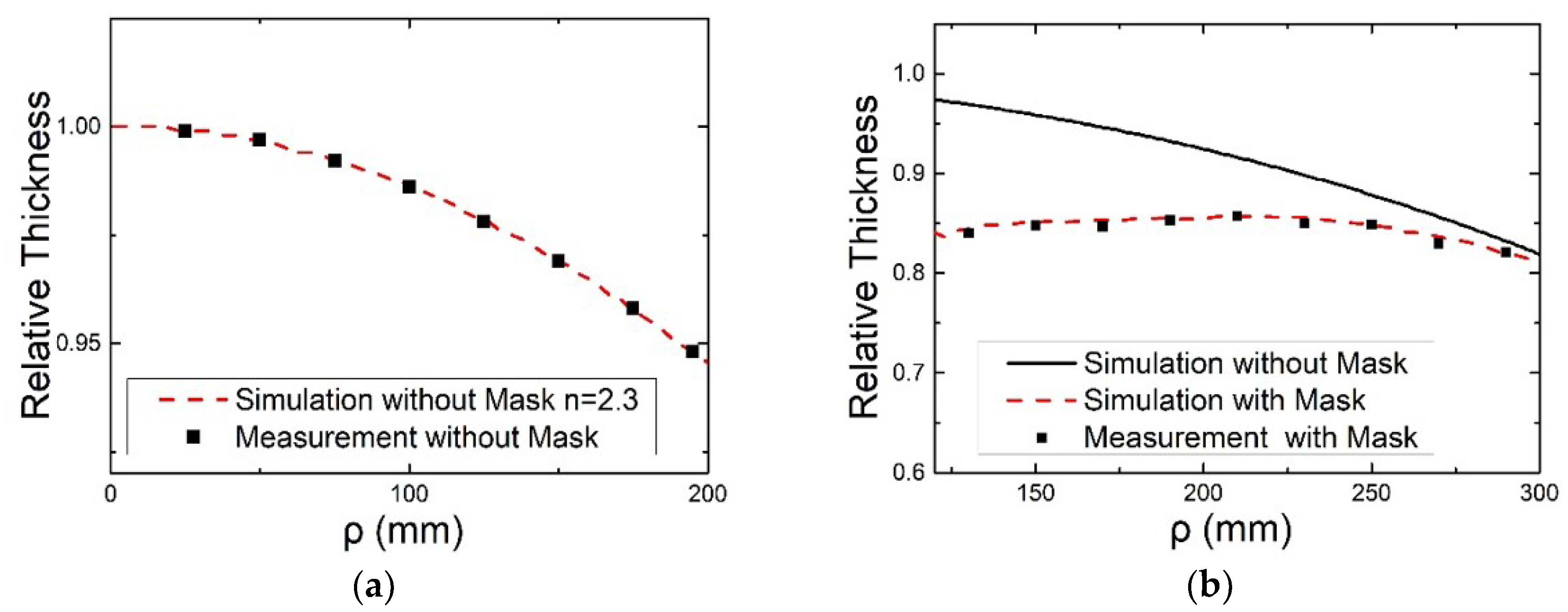
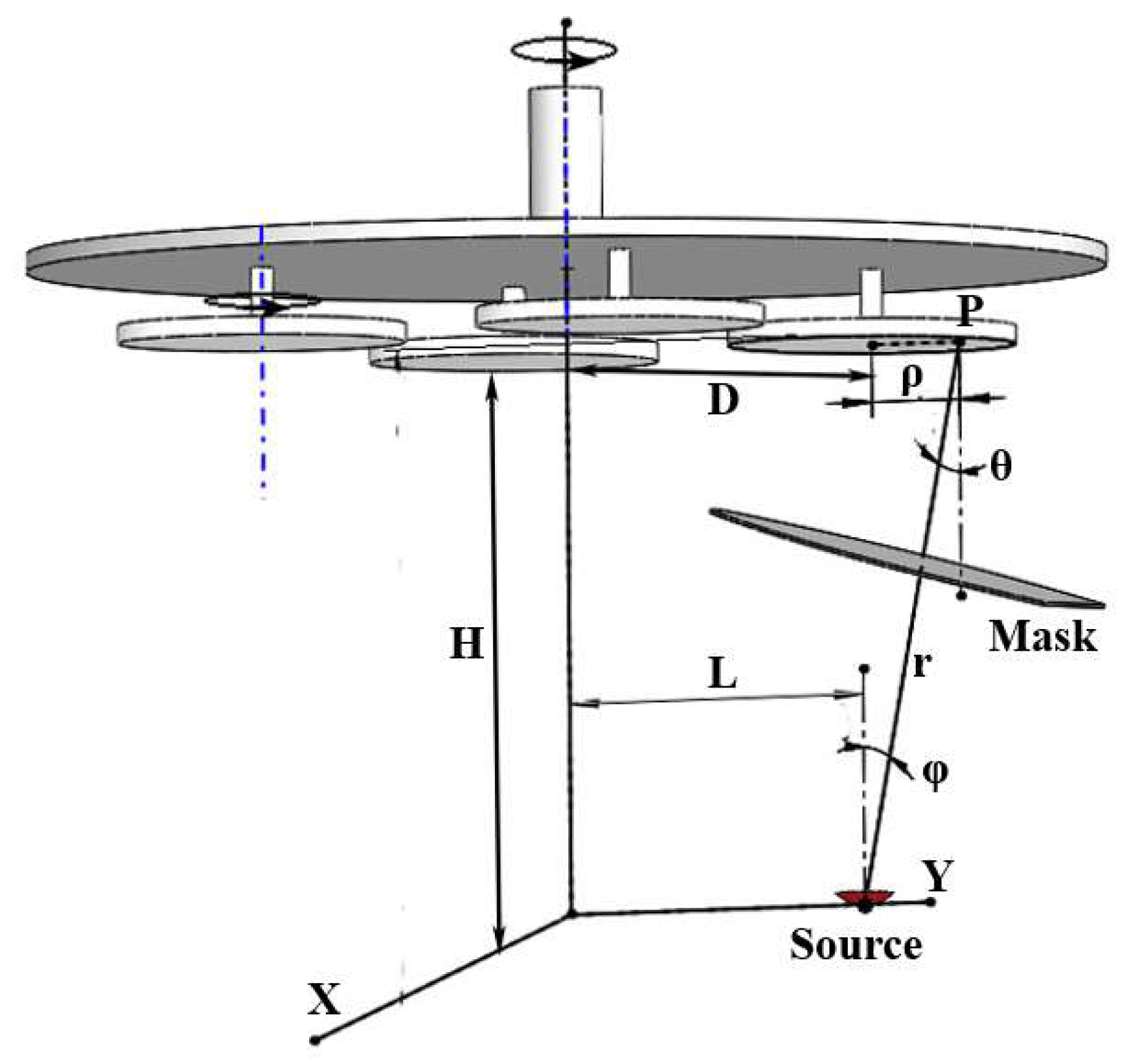

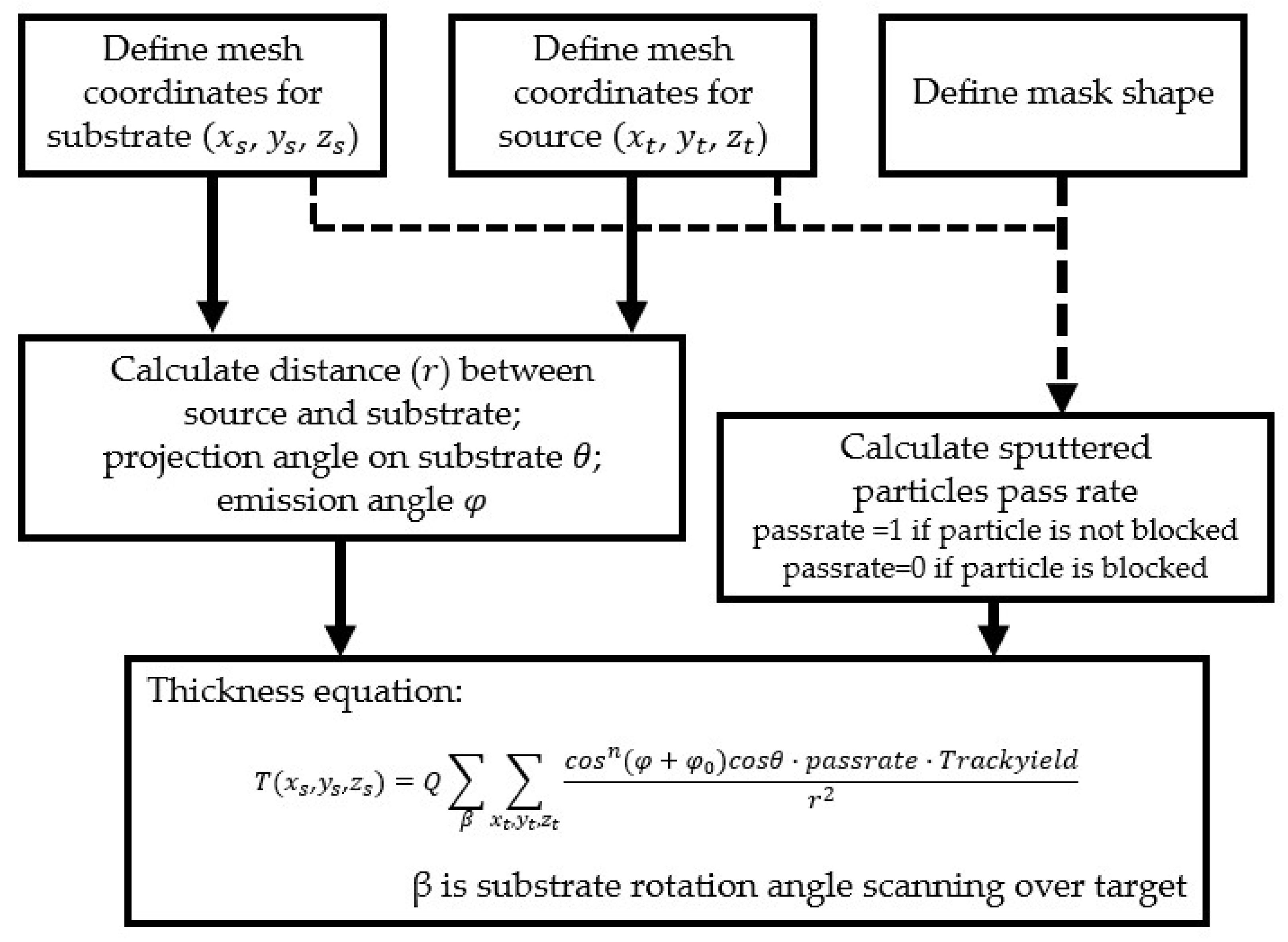
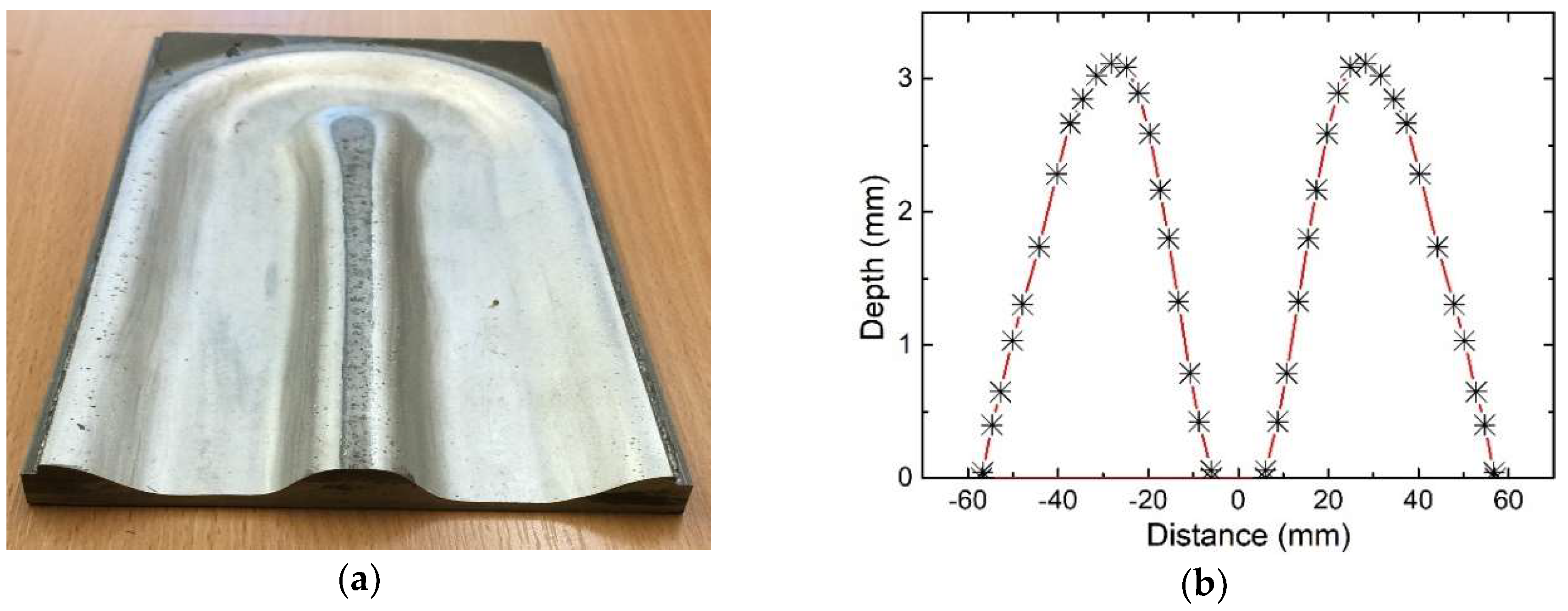
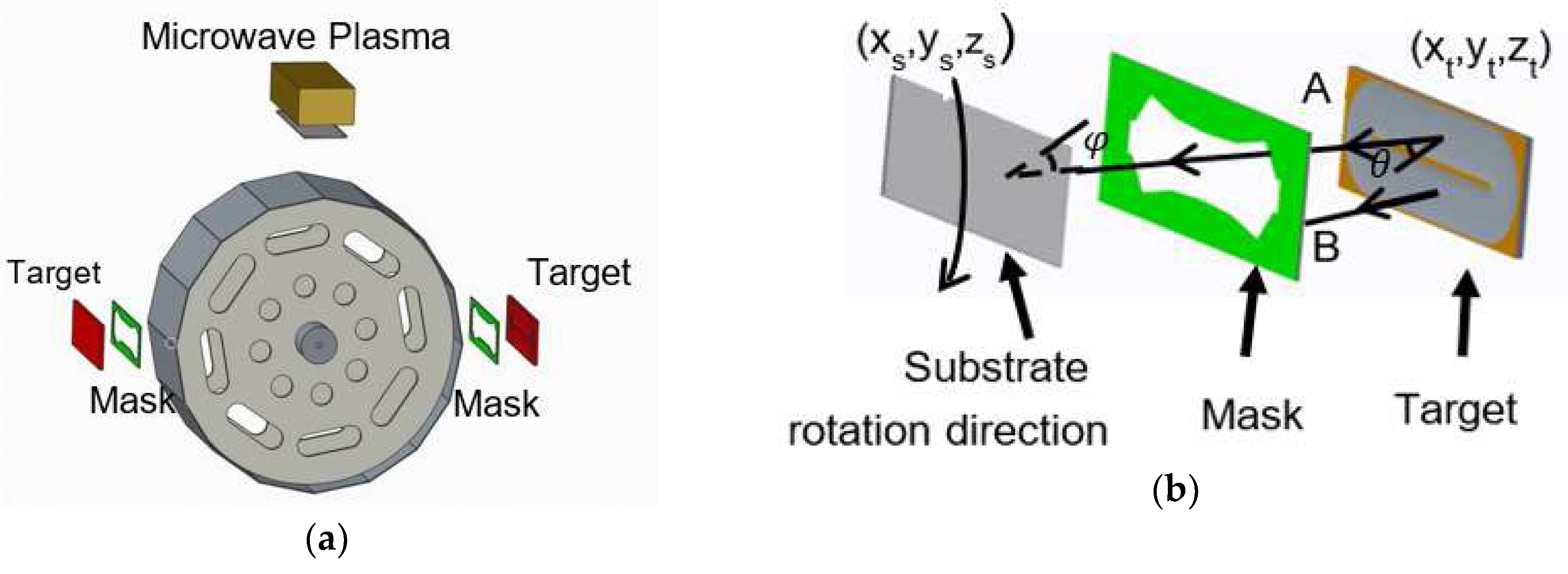
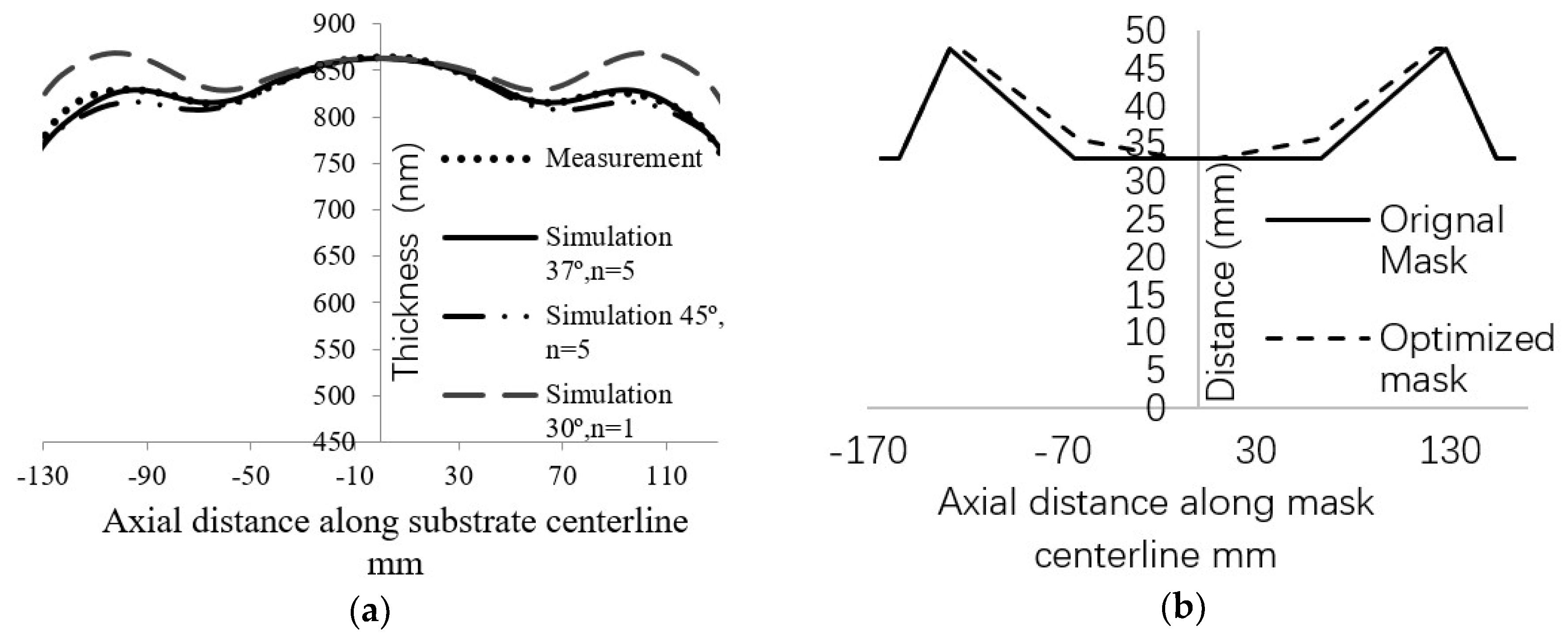
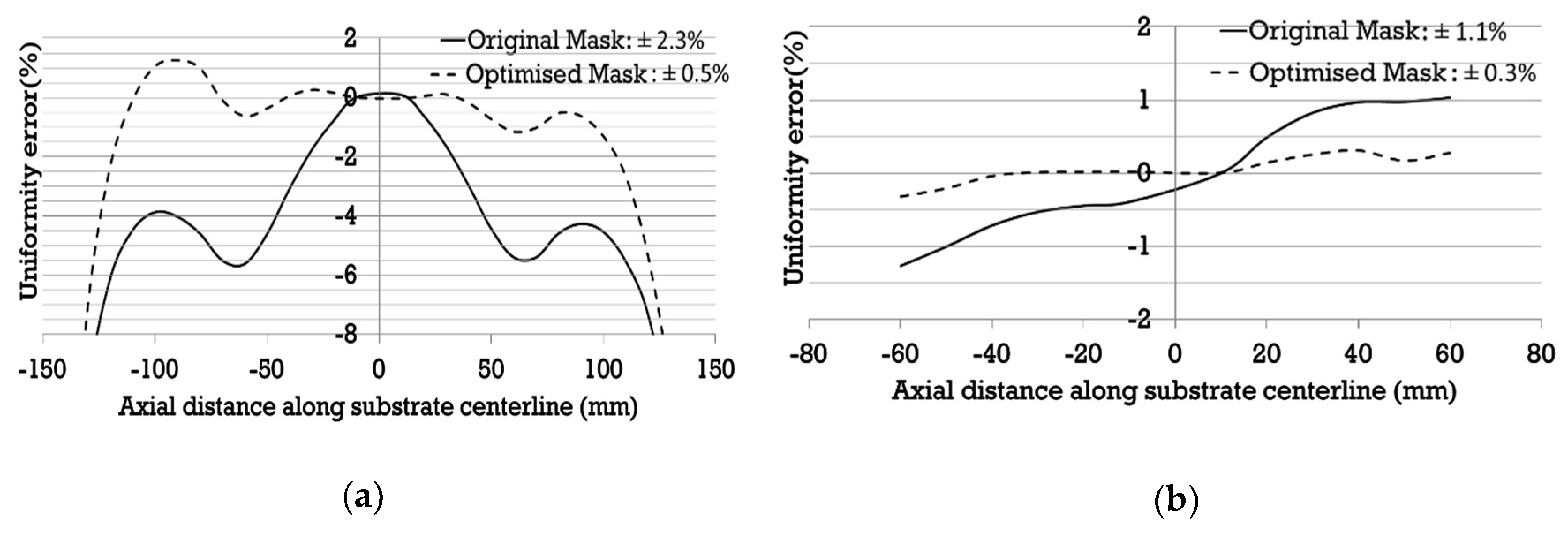
| Source Type | Ideal Point Source | Small Surface Source (Approximated Point Source) | Extended Source | Sputter Source |
|---|---|---|---|---|
| Emission characteristics | uniformly emitted vapor molecules in all directions | or | or | . or |
| Source Types | Thickness Distribution | |
|---|---|---|
| Evaporation source | Point source | |
| Small surface source | ||
| Extended Source | ||
| Sputtering source | ||
© 2018 by the authors. Licensee MDPI, Basel, Switzerland. This article is an open access article distributed under the terms and conditions of the Creative Commons Attribution (CC BY) license (http://creativecommons.org/licenses/by/4.0/).
Share and Cite
Wang, B.; Fu, X.; Song, S.; Chu, H.O.; Gibson, D.; Li, C.; Shi, Y.; Wu, Z. Simulation and Optimization of Film Thickness Uniformity in Physical Vapor Deposition. Coatings 2018, 8, 325. https://doi.org/10.3390/coatings8090325
Wang B, Fu X, Song S, Chu HO, Gibson D, Li C, Shi Y, Wu Z. Simulation and Optimization of Film Thickness Uniformity in Physical Vapor Deposition. Coatings. 2018; 8(9):325. https://doi.org/10.3390/coatings8090325
Chicago/Turabian StyleWang, Ben, Xiuhua Fu, Shigeng Song, Hin On Chu, Desmond Gibson, Cheng Li, Yongjing Shi, and Zhentao Wu. 2018. "Simulation and Optimization of Film Thickness Uniformity in Physical Vapor Deposition" Coatings 8, no. 9: 325. https://doi.org/10.3390/coatings8090325





